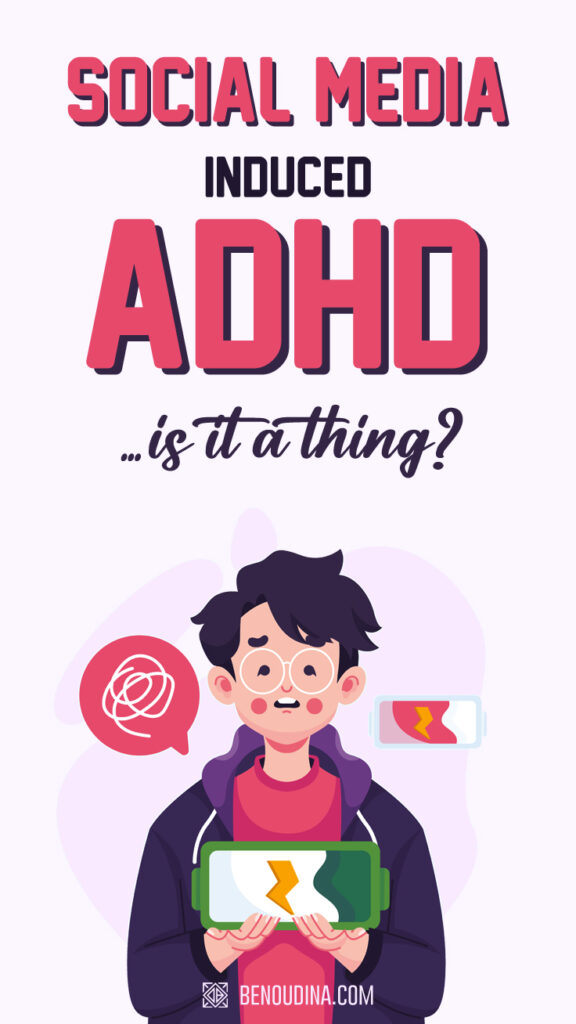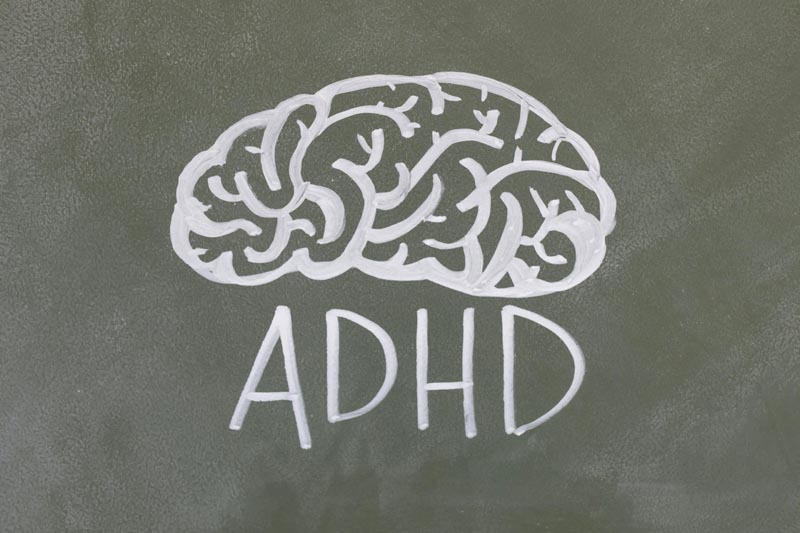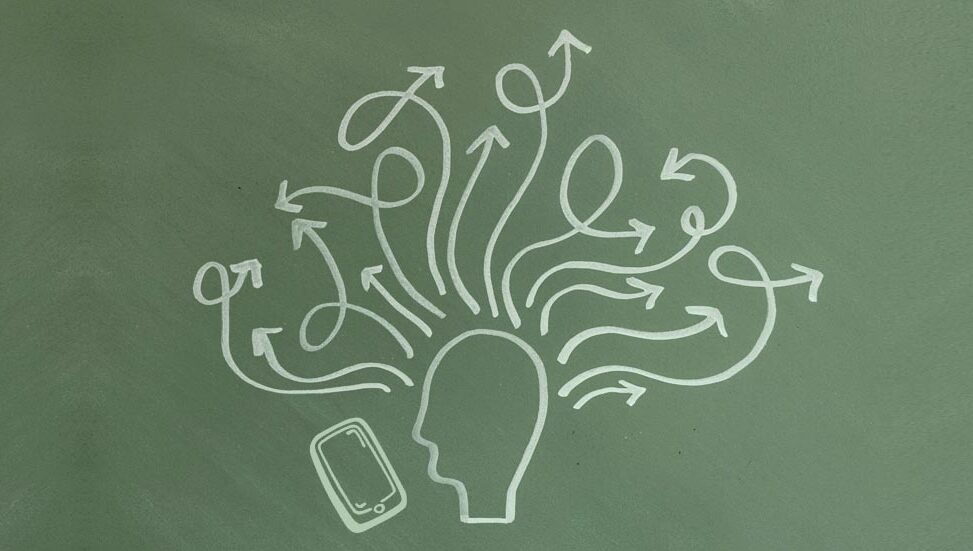In previous articles we discussed Social Media Addiction, and some Benefits you can get by Breaking Phone Addiction and working towards a low screen time. In those articles we discussed the huge role dopamine and our brain’s reward system play in smartphone addiction, and touched on the subject of ADHD and does social media cause ADHD.
While in this article, we’ll examine potential connections between ADHD and smartphone addiction. Additionally, we will explore simplified scientific explanations, and compare genuine ADHD with the concept of “Social Media ‘ADHD’.”
Here is a sneak peek into my findings as a med student:
ADHD and “Smartphone ADHD” are slightly similar in symptoms, yet they differ significantly in their underlying causes and consequently, in their treatment approaches.
Let’s dive right in!
Introduction

As we discussed before, our constant phone use seems to be rewiring our brains for shorter attention spans. “Context switching,” the mental juggling act of jumping between different activities and stimuli, compounds this problem, straining our working memory even more and making it even harder to stay focused.
Further complicating the issue is the neurotransmitter dopamine, which plays a crucial role in motivation, reward seeking, and focus. People addicted to social media often exhibit a heightened need for dopamine stimulation. This can lead to a devaluation of everyday activities, rendering them less stimulating. And potentially leading to a lack of fulfillment in areas such as academics, professional endeavors, social interactions, and even basic needs like eating.
Similarly, while the exact cause of ADHD remains unknown, researchers believe potential dopamine depletion or imbalances in dopamine processing may play a role.
Understanding ADHD (This part might be boring for some)
Attention-deficit hyperactivity disorder (ADHD) affects many individuals. Its characteristics are: sustained, irregulated, and inappropriate patterns of hyperactivity, inattention, and impulsivity.

The causes and biological processes behind ADHD are not fully known. There are signs of a genetic connection and some other factors. Researchers suggest that in people with ADHD, there might be a problem with how their brains handle dopamine.
This could be like having a faulty “mail system” for dopamine, leading to imbalances. While scientists aren’t sure exactly what causes ADHD, this potential dopamine issue may be one central piece of the puzzle explaining why focusing and staying motivated can be harder for people with ADHD.
Treatment for ADHD, often involving medications like Adderall, aims to address potential biological dopamine issues and improve focus.
Diagnosing ADHD requires a mental health professional. They’ll conduct a comprehensive evaluation, to distinguish ADHD from other conditions with similar symptoms, our subject today “Smartphone ADHD” is slightly different.
The concept of “Smartphone ADHD”

“Smartphone ADHD” isn’t a clinical diagnosis.
It’s a term we will use to describe the effects of excessive phone use on our ability to focus, stay motivated, and resist boredom. These symptoms can mimic those of (ADHD), but the underlying causes and solutions are different.
Constant Stimulation is the Main Suspect
Heavy phone use and constant social media stimulation might be why we often connect ADHD and smartphone addiction. They are causing our brains to become accustomed to high dopamine levels. Adapted to these virtual adventures, the brain (and by extension, us) expects to be in that state of stimulation, arousal, and even higher dopamine levels. Things that our daily life doesn’t necessarily produce. Simply put, our brain adjusts to high levels of dopamine from social media gratification, creating a higher baseline for “normal” stimulation.
Smartphone ADHD Symptoms
- Anhedonia: A state characterized by a diminished ability to experience pleasure in any aspect of life.
- Less Motivation (ADHD-Like): We feel less motivated to engage in everyday activities like work, academic pursuits, or real-life social interactions.

- Constant Search for Stimulation (ADHD-Like): We may constantly seek stimulation through phone use, overindulging in pleasures, or even engaging in risky behaviors.
- Impulsivity (ADHD-Like): The dopamine-seeking behavior can manifest as impulsive actions.
- Reduced Attention Span (ADHD-Like): Our constant search for stimulation can translate to difficulty focusing and maintaining attention. We extensively talked about short attention spans in a previous article.
As you can see, these are signs that are very similar to ADHD symptoms. And this is why we often connect ADHD and phone addiction.
Could too much screen time be mistaken for ADHD?
A case study suggests a 9-year-old diagnosed with ADHD saw improvement in his focus problems simply by cutting back on screen time. This raises the question about the connection between ADHD and phone addiction. And whether ADHD might actually be caused by excessive phone or tablet use.

Conclusion – Main differences
- ADHD: A medically diagnosed and treated neuro-biological deficit/disruption of dopamine that leads to ADHD symptoms.
- “Smartphone ADHD” is different: where the brain is accustomed to high dopamine levels. “ADHD” in Phone Addiction is solved through practical strategies we discuss in various articles – phone detox, app limitations, mindfulness exercises, etc.
RESOURCES
Social Media Addiction: Damaging Your Brain & Attention Span?
The Dopamine Transporter and Attention-Deficit/Hyperactivity Disorder
DISCLAIMER
It’s important to note that research on ADHD and dopamine is ongoing. While the link is promising, more research is needed to fully understand the role of dopamine in ADHD.

Leave a Reply